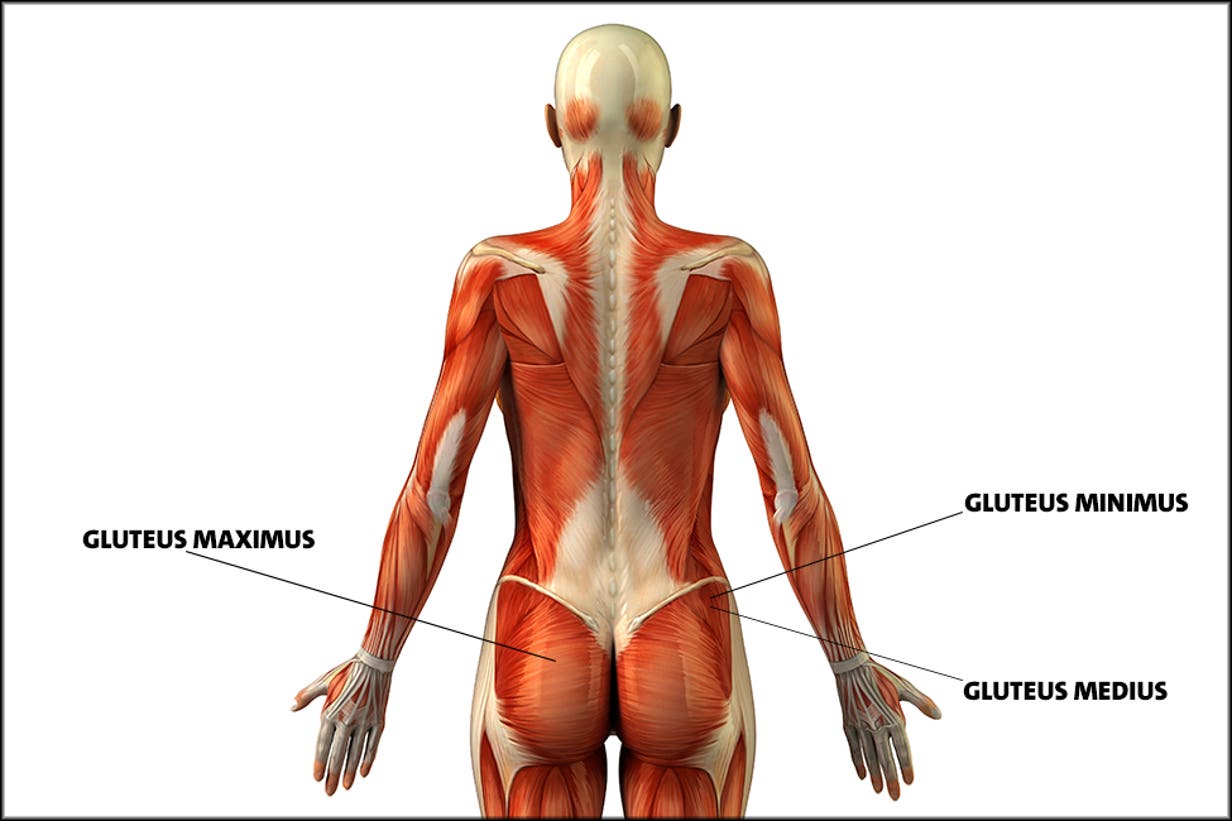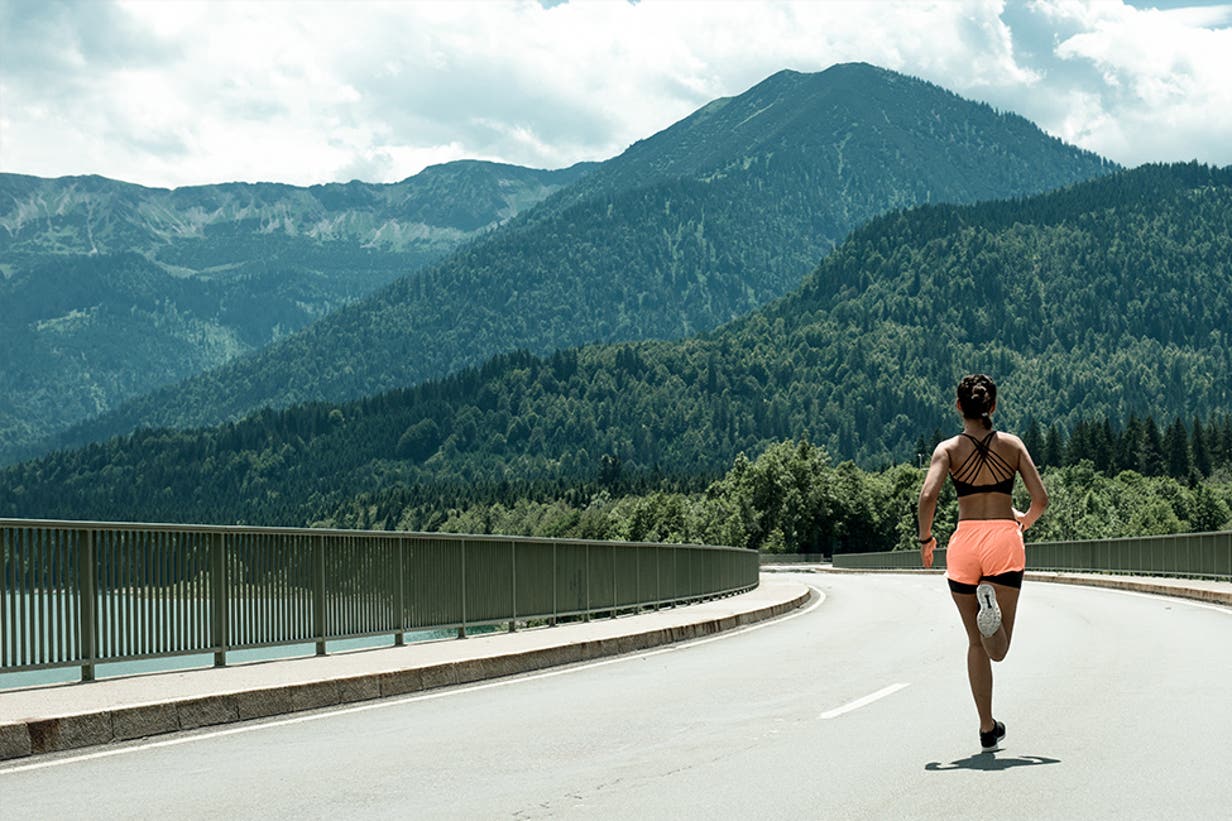Great runners have great butts – and not just to look good in lycra. Well trained glutes fulfill a variety of important purposes: Strength, power, and injury protection. Ever experienced a niggling pain in your knees, hips or back after running? It could be your weak set of glutes that are causing the pain.
Time to face it: being a good runner requires more than simply running endless miles. Glute strengthening is a key component of running training. Here’s why and how to get your butt looking and performing like an athlete’s:

The glutes in your stride
To understand the key role our glutes play in running, we must first take a look at the three types of gluteal muscles we have:
- Gluteus minimus
- Gluteus medius
- Gluteus maximus
Let’s start small, with the gluteus minimus and medius. They are the so-called “abductors”, meaning they are responsible for the important task of moving the leg away from the body. It’s as simple as this: the legs need to constantly move back and forth to get the body from A to B. What’s also important is the stabilization of the trunk. Here’s where the big guy comes into play: the gluteus maximus. Together with the gluteus minimus and gluteus medius, the gluteus maximus provides the trunk and also the pelvis with stability. Since running creates rotary movements in the trunk, the gluteal muscles need to work against this in order to keep the body in a good position without lateral movements.
But of course that’s not all the gluteus maximus is good for. It’s mainly responsible for extending the hip and raising the leg behind your body. Good hip extension always results in great forward motion. Why? Whenever your hip is not extended, your upper body tends to fall forwards, which disturbs the leg swing. For an efficient and effective leg swing that creates forward motion, rather than losing energy vertically when it plants into the ground, the upper body needs to be upright and in a straight line, sitting directly above the hips.

Strong glutes means less injuries
Runner to runner:
“Not so long ago, pain above the knee, in the hip and a tight hamstring slammed the brakes on my running career. The reason? I was training for a marathon and became so fixated on accumulating miles, that I forgot all about strength and functional training and ended up neglecting important muscle groups like my core and glutes. The important lesson I learned is to always train and strengthen my butt, no matter my goal.”
The best thing about strong and well-trained glutes is the prevention of common runner’s injuries such as runner’s knee or problems with the Achilles tendon. If glutes are not trained enough, during running the forces get transmitted down the legs which can then lead to future injuries. How to avoid this? Tackle weak glutes before they become an issue with these exercises:
- Elevated split squats
- Single leg hip raises
- Squats
The best thing about these three exercises is that they strengthen the glutes and at the same time improve hip extension. Two things you need to reach your full potential as a runner.
Let’s recap
Well-trained glutes prevent you from severe and annoying injuries, as well as improve your running performance and times. That’s why, if you want to become a better runner, it’s not enough to just run. Strengthening and training your glutes needs to be included in your training plan.
Strong butt, strong performance.